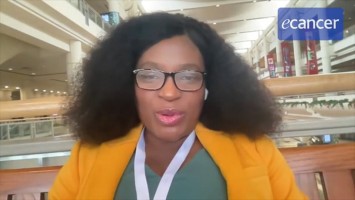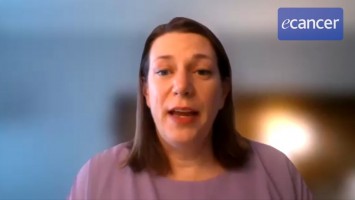We have presented the IFM2017-03 trial at ASH this year. It’s a phase III trial directed to the frail population of patients with a dexamethasone-sparing strategy. So the trial is randomising elderly patients with newly diagnosed multiple myeloma who are frail per the ECOG proxy frailty score and the patients were randomised to receive either daratumumab/lenalidomide with only two cycles of dexamethasone and then stop dexamethasone versus the previous standard of care treatment of lenalidomide and dexamethasone. Both arms were given until progression and the primary endpoint was PFS.
What were the results of this study?
We have included a population of frail patients and we can say that it is the first phase III trial for elderly frail patients, the median age was 81 years old. Two-thirds of the patients were above the age of 80; half of the patients had ECOG of 2 or more. So we have reported the PFS and we observed significant benefit of median PFS in the DR arm, so daratumumab/lenalidomide. So the median is 53.4 months versus the lenalidomide/dexamethasone group of 22.5 months, so this is a hazard ratio of 0.51 and a significant p-value.
We also observed an improvement of overall survival in the population. So the median was not reached in the DR group and the median was 47.2 months in the lenalidomide/dexamethasone group with a hazard ratio of 0.52 and a significant p-value.
The last point we studied is the safety of the two different regimens, so the daratumumab/ lenalidomide with dexamethasone-sparing strategy and lenalidomide/dexamethasone. What’s interesting is despite the fact that patients in the DR group received the treatment much longer, they had some increase of grade 3/4 side effects but this was mostly the haematological side effects and actually the neutropenia that was higher in DR versus lenalidomide/dexamethasone but there was no increase of grade 3/4 non-haematological side effects and no increase of infection when we add daratumumab. So it was 19% of grade 3/4 infections in the DR group versus 21% in the lenalidomide/dexamethasone group and there was no increase of treatment discontinuation in the DR group versus the lenalidomide/dexamethasone group.
So, in total, we think that the treatment with DR and this dexamethasone-sparing strategy is obviously more efficacious in terms of PFS, overall survival and is well tolerated without this increase of non-haematological side effects or infection that we usually observe in other trials with frail patients.
What do you think is the clinical significance of these results?
We are now dividing the population of elderly patients with newly diagnosed multiple myeloma into two different groups – the patients who are fit and the patients who are frail. So the patients who are fit will be able to receive more intense treatments, like the quad, for example, regimens. But for the frail population of patients this strategy of dexamethasone-sparing regimens is relevant because we see in this truly frail population of patients a very good efficacy with the 53 months of median PFS and the profile of toxicity is very good without increased infection rates, for instance. The quality of life of the patients is very good with this dexamethasone-sparing regimen. So it could become a new standard of treatment for the elderly frail patients with newly diagnosed multiple myeloma.








